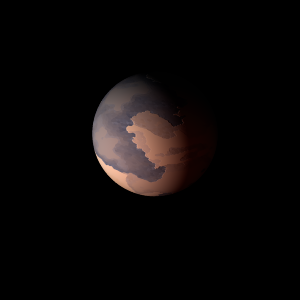|
|
Space Astro
|
Info for exoplanet "Eijwak"
| Scientific (actual) data |
|---|
| Name | K2-268 f |
| Planet status | Confirmed |
| Radius | 0.1989 |
| Orbital period | 26.2706 |
| Discovered | 2019 |
| Updated | 2022-12-01 |
| Tzero tr | 2457140 |
| Impact parameter | 0.39 |
| Temperature (kelvin) | 492 |
| Publication | Published in a refereed paper |
| Detection type | Primary Transit |
| Radius measurement type | Primary Transit |
| Star name | K2-268 |
| Right ascension | 133.71° |
| Declination | 11.85° |
| Mag j | 12.158 |
| Mag h | 11.72 |
| Star distance | 331.46 |
| Star metallicity | 0.03 |
| Star mass | 0.84 |
| Star radius | 0.78 |
| Star temperature | 5068 |
| Star alternate names | 2MASS J08545028+1150537, EPIC 211413752, WISE J085450.28+115053.7 |
| Wikipedia article | K2-268 f |
Back
| |
| Fictional info (?) |
|---|
| Suggested name | Eijwak |
| Planet type | Cold planet |
| The two polar ice caps appear to be made largely of sand. |
| Atmosphere | 2H2O | 81% |
| Hydrogen deuteride (HD) | 19% |
| Argon | 0.00052% |
| Atmospheric pressure | 100 bar |
 |
| No known satellites |
| Google search for Eijwak |
|
Website by Joachim Michaelis
|
|
|
|